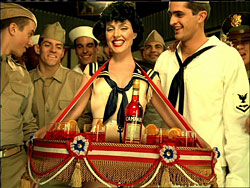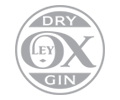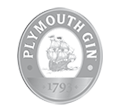 The Negroni is la dolce vita in a glass summoning up images of all that is best about Italy and the Italian way of life. It’s an exquisitely simple drink made from gin, Campari and sweet vermouth either in equal parts, or a 2:1:1 ratio. And, this taste explosion is one of the few classic cocktails whose provenance can be traced to a specific time and place.
The Negroni is la dolce vita in a glass summoning up images of all that is best about Italy and the Italian way of life. It’s an exquisitely simple drink made from gin, Campari and sweet vermouth either in equal parts, or a 2:1:1 ratio. And, this taste explosion is one of the few classic cocktails whose provenance can be traced to a specific time and place.
Imagine the scene: the Bar Casoni in Florence circa 1920, patrons enjoying their Americanos, a drink made with Campari, sweet vermouth and soda water, named thus because of European pro-American feelings after World War I. The Americano was the most fashionable drink of the day but one regular had his own ideas about what made the perfect aperitif. Every day Count Camillo Negroni ordered his Americano to be made with gin and without soda water. Soon his friends began to request their drinks ‘the Negroni way’ and a classic was born.
The Negroni soon became the favourite drink of the Italian Futurists, the avant-garde literary and artistic movement led by Filippo Tommaso Marinetti. Today, along with many other gin cocktails from the Great Cocktail Age of the 1920s, it has become ultra fashionable again. Through the Negroni Club we’ll be exploring what different gins with their individual taste personalities, bring to the Negroni party. Bartenders also increasingly play around with the sweet vermouth element substituting dry vermouth or Punt e Mes or other aromatics. But there’s one ingredient that is always a constant and that is Campari, the Italian spirit with a long heritage and a fascinating history.
 The Negroni
The Negroni
The Gintime Negroni Recipe is equal measures of:
- Gin
- Campari
- A sweet vermouth such as Cinzano Rosso
Or those who like more juniper use 2:1:1 proportions
Combine all the ingredients in an iced old-fashioned glass and stir gently. Add a hefty orange slice as a garnish.
Campari was invented in 1860 by Gaspare Campari who perfected a blend of over 60 different fruits, aromatic herbs, spices, peels and bitters. He originally named his drink Bitter all’uso d’Hollandia, to capitalise on the popularity of Dutch cordials and liqueurs at the time. Very quickly however it was simply called Campari.
Campari is still made to Gaspare’s original recipe, a formula that is only ever known to three people in the world. Even its production is shrouded in secrecy. Only casual labour work at the distillery in Milan and each ingredient is numbered, not named, so no one ever becomes familiar with what is in the blend. However experts have identified yarrow, wormwood, quinine, rhubarb, ginseng and orange peel in the complex array of flavours and aromas. Some of the ingredients are infused in alcohol, others in hot water, to extract their essences. Then the flavours combine over the two weeks that the spirit rests before it is bottled. The result is the distinctive, surprisingly complex, bitter flavour belying Campari’s rich ruby colour that suggests sweetness.
In Italy Campari is drunk as a pre dinner aperitivo (aperitif), literally ‘an opener of the palate’. There’s good scientific sense behind this as the bitter taste of Campari on the tongue increases digestive secretions, cleanses the palate and sharpens the appetite. Gin, with its complex botanicals profile, has much the same effect particularly in aromatic type cocktails or when combined with the bitter taste of tonic water. When gin and Campari meet each other in the Negroni, the piney, camphor taste of juniper is perfectly balanced by the sharper, more assertive flavours of Campari. Both are nicely rounded out by the herbaceous sweetness of vermouth. Then one has something more than a drink, one has a force to be reckoned with.
For more information on Campari visit www.campari.com

 The Negroni
The Negroni


